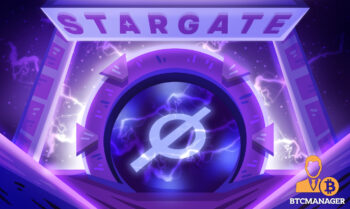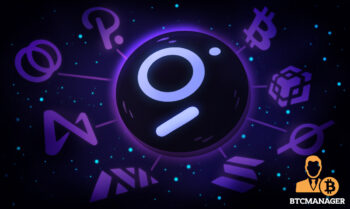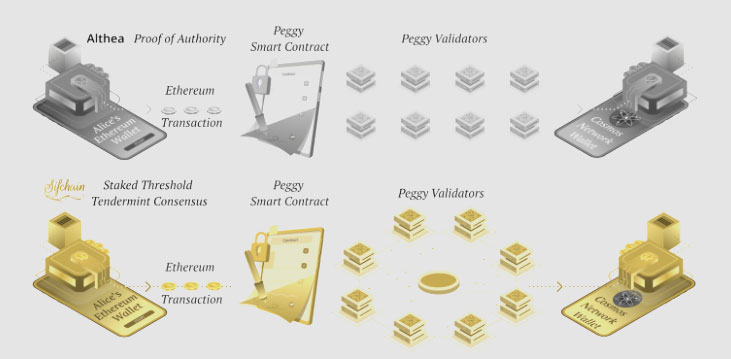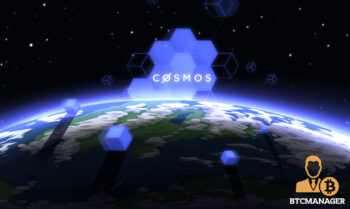2021-11-28 21:15 |
Cosmos is a decentralized blockchain ecosystem in which developers can build their blockchain into a network of interoperable other blockchains.
Now, if that first “What is Cosmos” tagline sounds a bit confusing and jargony, don’t fret– we’re going to unpack everything in this Cosmos guide.
To best understand Cosmos’ value, it’s worth looking at how other similar blockchain ecosystem projects fall short.
Bitcoin (Blockchain 1.0): Bitcoin, the OG of the space launched in 2008, pioneered the blockchain strictly for the use case of a peer-to-peer digital currency. Building a decentralized application on Bitcoin is difficult for a myriad of fundamental blockchain reasons, so a project like Ethereum emerged with a solution.
Ethereum (Blockchain 2.0): Ethereum, the king of the castle launched in 2014, brought smart contracts and the Ethereum Virtual Machine to the party, allowing developers to build permissionless applications on top of its blockchain, rather than having to build their own blockchains.
Ethereum was designed to be a single blockchain that underpins a sprawling network of decentralized applications. Well, so was the Binance Smart Chain. And Cardano. And Solana. And NEO. Each individual blockchain carries specific advantages (and disadvantages) that the others don’t, and they cater to different cohorts of developers and users.
The Cosmos home page
What happens if you want to build a dAPP that uses ETH, NEO, and ADA? Most blockchain ecosystems aren’t compatible with each other. This “my way or the highway” approach has caused strife and competition among developers but has also birthed an industry of “interoperability” projects that aim to glue these projects together.
Further blockchain 2.0 limitations include scalability, usability, and sovereignty issues:
Scalability: Ethereum has a limit of 15 transactions per second, gas fees can get pricey. Usability: The EVM must accommodate every use case, so it optimizes for the average use case. Some developers have to make sacrifices to fit the mold. Sovereignty: The ETH platform governs over all apps, for better or for worse.The Cosmos vision is to usher in “Blockchain 3.0” where developers can build into a network that seamlessly transmits transactions with others. This “Internet of Blockchains” would allow developers to maintain sovereignty while functioning in the overall blockchain ecosystem.
Essentially, Cosmos (and competitors like Polkadot) looked at the Blockchain 1.0 and 2.0 mess and said, “let’s just build the interoperability feature from the ground up.”
So, the Cosmos project is an ecosystem of multiple blockchains that are designed to play and grow together, nicely. This “Internet of Blockchains” where they’re all connected has immense potential.
Source: Cosmos
The Cosmos ATOM cryptocurrency powers everything. As a proof-of-stake chain, Cosmos uses ATOM to reward stakers and enable the function of the various applications utilizing the network’s computational power.
About the Cosmos (ATOM) TeamCosmos was founded by developers Jae Kwon and Ethan Buchman in 2014 while creating Tendermint, the underlying consensus algorithm for the Cosmos network. The project was also aided by The Interchain Foundation (ICF), a Switzerland-based non-profit that provides capital to open-source blockchain projects.
In 2017, the ICF held a two-week ICO for the ATOM token, raising $17 million. Tendermint Inc would go on to raise another $9 million through a Series A round in 2019.
The Cosmos software was released in 2019.
The Cosmos founding team split in 2020, but the project continued to gather momentum and it operates in a decentralized manner in a proof-of-stake network.
The Inter-Blockchain Communication ProtocolThe premier Cosmos adaptation is the Inter-Blockchain Communication protocol (IBC), which enables users to exchange digital assets and data across multiple sovereign, decentralized blockchains.
The Cosmos Hub is the economic center of the Cosmos network. It’s essentially the center of a universe of interconnected blockchains.
The Cosmos Hub products include:
Marketplace: users can swap digital assets across the Interchain with low fees and instant transaction confirmation. Router: connect chains by establishing IBC connections and operating decentralized bridges with other chains like Bitcoin and Ethereum. Custodian: The hub can store digital assets from different chains.Zones in Cosmos are connected to the Cosmos Hub through the IBC, which enables information to flow at a rapid and extremely cost-efficient pace– most transactions on Cosmos cost $0.00.
All zones connected to the Cosmos Hub are interoperable with every other zone, meaning every independent dapp, validator, and consensus mechanism can exchange information.
Tendermint:Tendermint is the engine that keeps the whole Cosmos machine running, and it plays a variety of roles.
First, it enables developers to build interoperable and operational blockchains without having to start from scratch. This lowers the barrier to entry for new developers to enter the ecosystem.
The Tendermint Byzantine Fault Tolerance (BFT) algorithm allows the network of computers running the Cosmos software to uphold and secure the network, validate transactions, and commit new blocks to the blockchain. This proof-of-stake (PoS) consensus algorithm requires validator nodes to power the blockchain and vote on network changes by staking ATOM.
In order to become a validator in the Cosmos network, a node must be one of the top 100 nodes staking ATOM.
Final Thoughts: Keep Your Eye on Cosmos (ATOM)If Bitcoin made money a monetizable network, and Ethereum did the same for computation, Cosmos is one of the projects that aims to monetize the interoperability between multiple blockchains.
In other words, Cosmos is a blockchain-building toolkit that enables developers to roll their own blockchain out for a specific use case and immediately connect it to a flourishing and rapidly growing ecosystem for a fraction of the cost of running on a network like that of Ethereum. It’s more than just another blockchain network, it’s meant to be an environment and toolset for a variety of blockchains to be built.
Cosmos does three things:
It makes it easy for developers to build into a blockchain network by using Tendermint BFT and the Cosmos SDK. A world where blockchains play together nicely! Blockchains can transfer value through the IBC while also maintaining their sovereignty. Cosmos apps can scale without an astronomical rise in network fees.A more apt comparison than Cosmos vs. Ethereum is Cosmos vs. Polkadot.
apps on Cosmos
As evidenced by popular Cosmos dApps like Osmosis, Cosmos is able to provide developers a toolkit to build powerful applications, as well as a functional network without as many scalability constraints as that of Ethereum.
The post What is Cosmos (ATOM): A Guide to the Network of Blockchains appeared first on CoinCentral.
origin »Cosmos (ATOM) на Currencies.ru
|
|


















